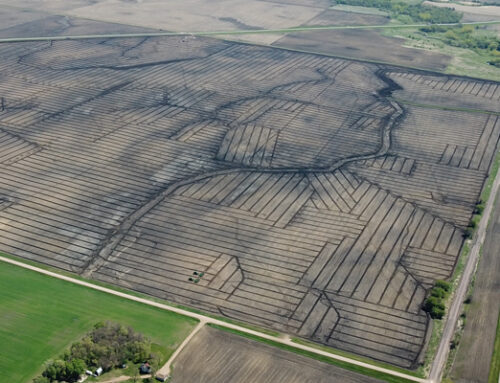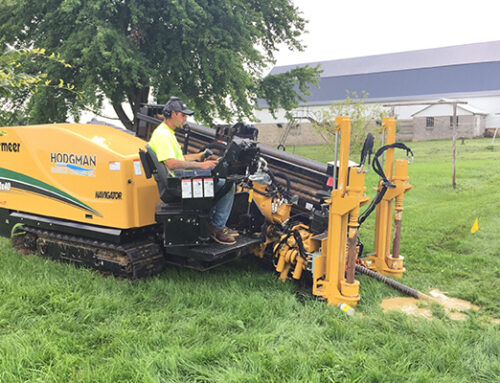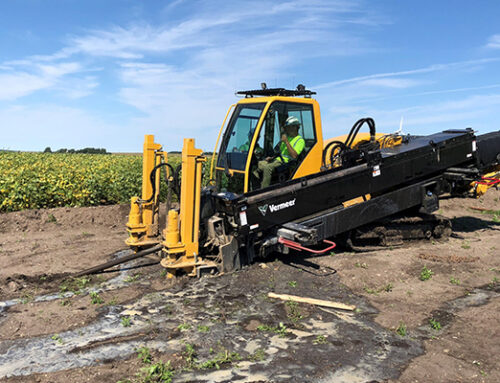When it comes to farm drainage projects in Minnesota, choosing the correct installation method is crucial. Directional drilling and traditional trenching are two popular techniques, each with advantages and disadvantages. Understanding the differences between these methods is essential to make an informed decision tailored to your specific needs.
This blog post discusses the intricacies of directional drilling in Minnesota and traditional trenching. It compares their pros and cons, helping you determine which approach best suits your agriculture water management requirements.
Advantages of Directional Drilling in Minnesota
Minimizing Disruption
One of the significant advantages of directional drilling in Minnesota is its ability to minimize disruption to the farm’s surface. Unlike traditional trenching, which involves extensive digging, this method requires only small entry and exit points for the equipment. This means minimal disturbance to the topsoil, reducing the impact on your ag activities.
Precision and Flexibility | Directional Drilling in Minnesota
It allows for precise control over the installation process. Contractors can navigate the drill beneath obstacles like buildings, roads, or existing crops, ensuring a more flexible and customized drainage system. This precision is particularly beneficial for farms with complex layouts or limited space, maximizing water distribution efficiency and ensuring proper crop drainage.
Reduced Restoration Costs
Since directional drilling causes minimal surface disruption, the restoration costs are significantly lower than traditional trenching methods. With fewer areas to restore and repair, farmers can save time and money, making it a cost-effective choice for agriculture water management projects in Minnesota.
Disadvantages of Directional Drilling
Initial Cost
While this method offers long-term savings regarding reduced restoration costs, its initial installation expenses can be higher than traditional trenching. The specialized equipment and expertise required for directional drilling contribute to the upfront investment. However, weighing this cost against the long-term benefits and potential savings in restoration and operational efficiency is essential.
Advantages of Traditional Trenching
Cost-Effectiveness
Traditional trenching methods are generally more cost-effective upfront since they require less specialized equipment and expertise. For farms with a limited budget for drainage projects, trenching might seem like a more accessible option. However, it’s crucial to consider the long-term costs associated with restoration and potential disruption to ag activities.
Suitability for Straightforward Projects | Directional Drilling in Minnesota
This method is well-suited for farms with simple layouts and minimal obstacles. If your farm has a clear and straightforward path for drainage installation, trenching can be a viable and practical option. It allows for efficient digging and direct pipeline placement, ensuring adequate field drainage.
Disadvantages of Traditional Trenching
Surface Disruption
The most significant drawback is the disruption it causes to the farm’s surface. Extensive digging can damage topsoil, affecting the overall fertility of the land. Additionally, the restoration process after trenching can be time-consuming and costly, impacting the farm’s productivity during this period.
Limited Flexibility
Unlike directional drilling, this method offers limited flexibility in navigating obstacles. If your farm has existing structures or challenging terrain, trenching might not be the most suitable option. It can be challenging to work around obstacles, potentially compromising the efficiency of the drainage system.
Choosing Between Directional Drilling in Minnesota & Traditional Trenching
The choice between these methods depends on your farm’s requirements and budget constraints. Directional drilling offers precision, minimal disruption, and long-term savings in restoration costs, making it an excellent choice for farms with complex layouts. On the other hand, traditional trenching is cost-effective for straightforward projects but comes with the drawback of surface disruption and limited flexibility.
When deciding on the proper method for your ag water management needs, carefully assess your farm’s layout, budget, and long-term goals. By understanding the advantages and disadvantages of these methods, you can make an informed decision that ensures efficient drainage without compromising the productivity of your farm in the long run.
Hodgman Drainage excels in directional drilling in Minnesota due to our expertise and specialized equipment. With a deep understanding of the local terrain and years of experience, we ensure precise and efficient installation, making us the ideal choice for farm drainage projects in the state. Contact us today!



